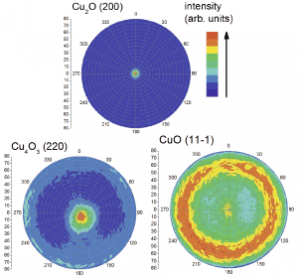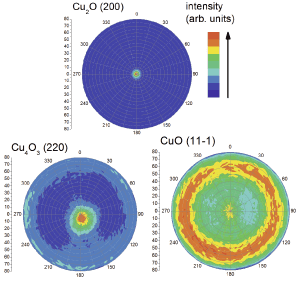 As the energy needs of modern society have shifted in the last few decades, so must the direction of semiconductor research. Copper oxide in its multiple phases may lead the way in the direction of clean, efficient, and affordable new sources of energy. A recent review article appearing in physica status solidi (b) by Bruno Meyer and coworkers details how.
As the energy needs of modern society have shifted in the last few decades, so must the direction of semiconductor research. Copper oxide in its multiple phases may lead the way in the direction of clean, efficient, and affordable new sources of energy. A recent review article appearing in physica status solidi (b) by Bruno Meyer and coworkers details how.
The multidisciplinary research team, consisting of experimentalists as well as theoreticians, from the universities of Giessen, Magdeburg, Ilmenau, and Jena shines new light onto obstacles for copper oxide-based solar cells. After thoroughly reviewing state-of-the-art knowledge of crystal structures, as well as the electronic and optical properties of Cu2O, Cu4O3, and CuO, the authors report on their own synthesis of all three phases. By accurately tuning the oxygen flow in their experiments, they were able to specifically grow films of each of the three compounds. Highly precise X-ray techniques confirm the quality and phase purity of the samples. Resistivity and optical absorption of the films are discussed, as these characteristics are particularly important for solar-cell applications. By performing photoluminescence and Raman measurements, valuable information on the defects is gained since these strongly affect the optoelectronic properties of the desired product. The measurements are complemented by electronic-structure calculations within density functional theory.
This detailed understanding of the three copper oxides enables Bruno Meyer and coworkers to manufacture a Cu2O-based device as well as the first solar cell based on Cu4O3. The results already look promising; however, the most outstanding problem left for the future is the increase of efficiency. The team is optimistic: During the 1970s controlling the conductivity of these materials was a main problem but this issue has been solved by the incorporation of nitrogen into the samples. The research team outlines that, in the same way, further experimental and theoretical understanding can lead to overcoming the remaining challenges.

















